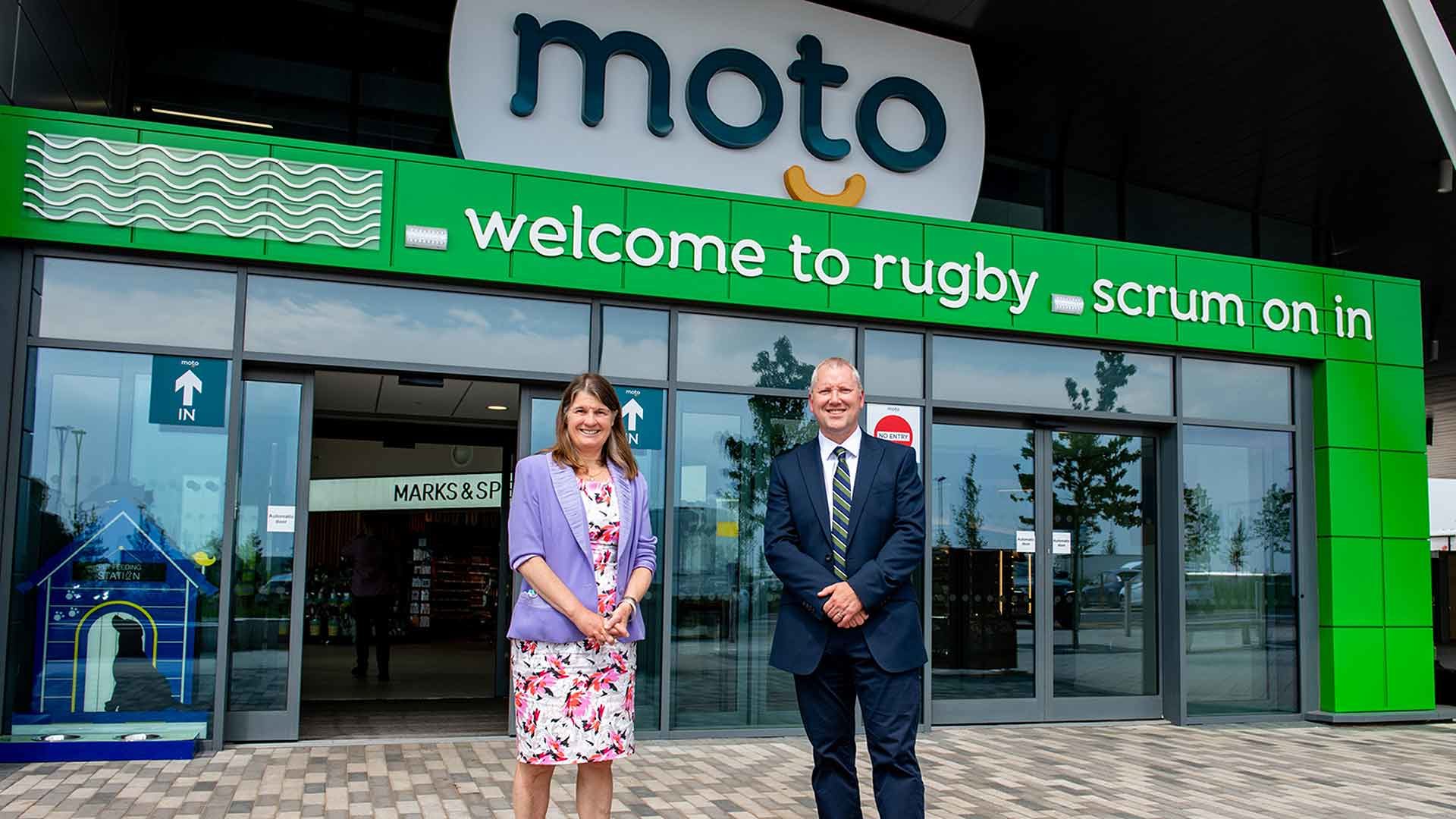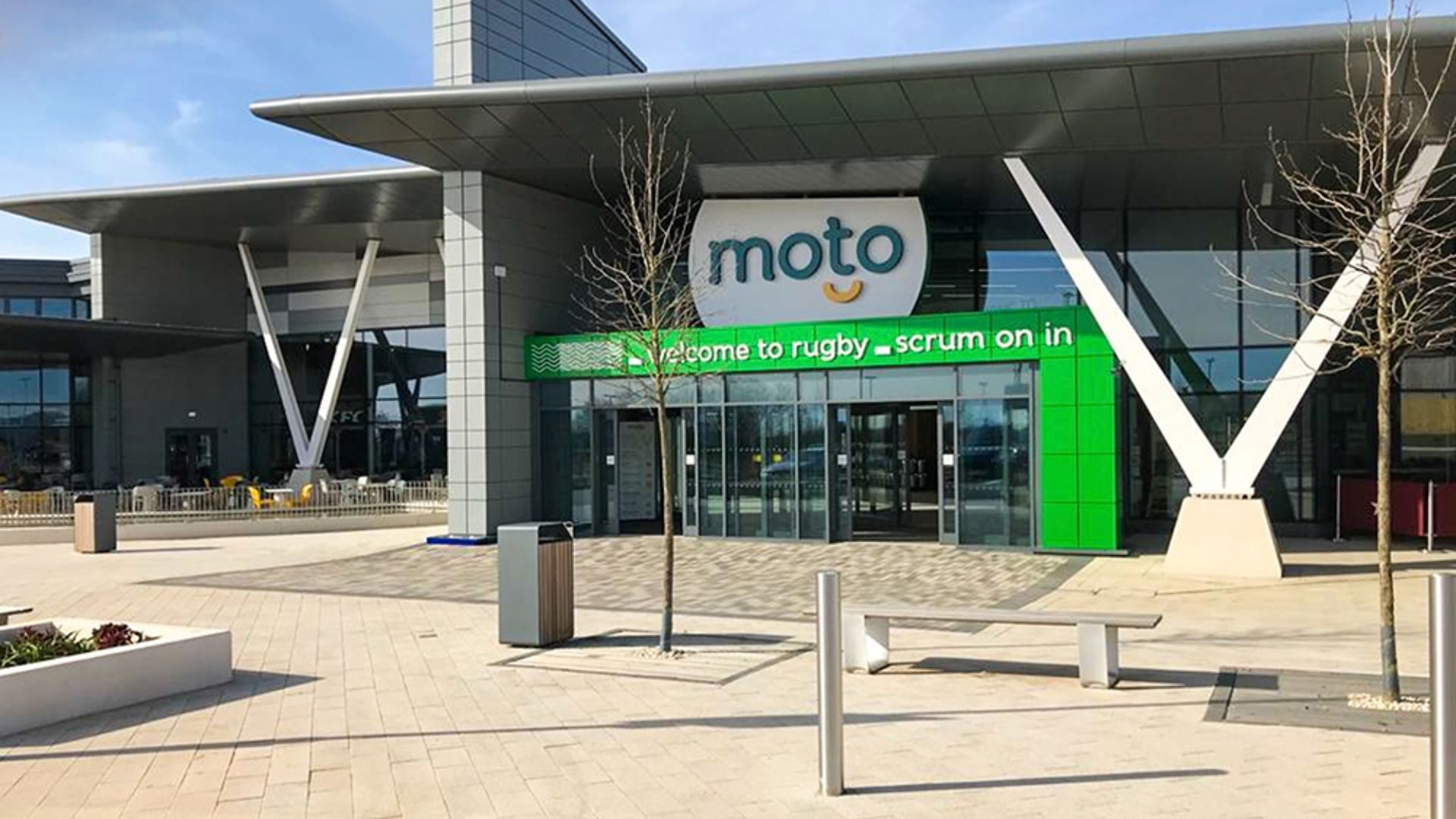
Electric car drivers will make up a growing proportion of motorway service area users as the ban on new petrol and diesel cars from 2030 approaches.
By 2030, Moto chief executive Ken McMeikan predicts EVs will make up nearly a third of motorway service station visitors, as motorists become reliant on them to charge up their EVs during long journeys.
He says this is proof of how electric car owners will become used to the idea of driving long distances in EVs and grabbing a fast-charge battery boost en route.
To meet expected demand, Moto is investing in 350kW DC ultra-rapid chargers at all its 45 locations across the UK motorway network.
These will add up to 100 miles of range in 10 minutes.

Rugby Services is the first Moto site to benefit from the long-term investment drive. It was officially opened by Secretary of State for Transport Rachel Maclean MP, who unveiled a plaque at the site.
The £40 million site has created 120 jobs – and currently claims to be the UK’s flagship EV site with 24 ultra-rapid charging points: 12 Tesla and 12 Electric Highway.
It is the largest ultra-rapid EV charging site on the UK motorway network.
Three more Moto motorway service areas will be fitted out with 24 ultra-rapid EV charging points by the end of 2021.
All existing 50 kW chargers will be upgraded by the end of this month, and there will be a minimum of six ultra-rapid chargers at all Moto sites by the end of 2022.
Rachel Maclean MP said: “I’m proud to open the largest ultra-rapid charging site on UK motorways.
“As we accelerate towards net zero emissions by 2050, we announced last November that we’re bringing forward the phase-out of new petrol and diesel cars to 2030 – and allowing high-performing hybrids until 2035.
“This zero-emission future will need a world-leading electric vehicle charging network. Rugby Services and Moto’s long-term plan and investment in EV is a perfect example of that in action.”
More than three million people are predicted to use Moto Rugby services annually.
ALSO READ
Best electric cars to buy in 2021
Nissan confirms £1bn gigafactory and new EV crossover for Sunderland
12 charging points, and 12 more reserved for Tesla. Busy service areas can have many hundreds of visiting cars. I think they’re going to need a few more. A drop in the ocean comes to mind.